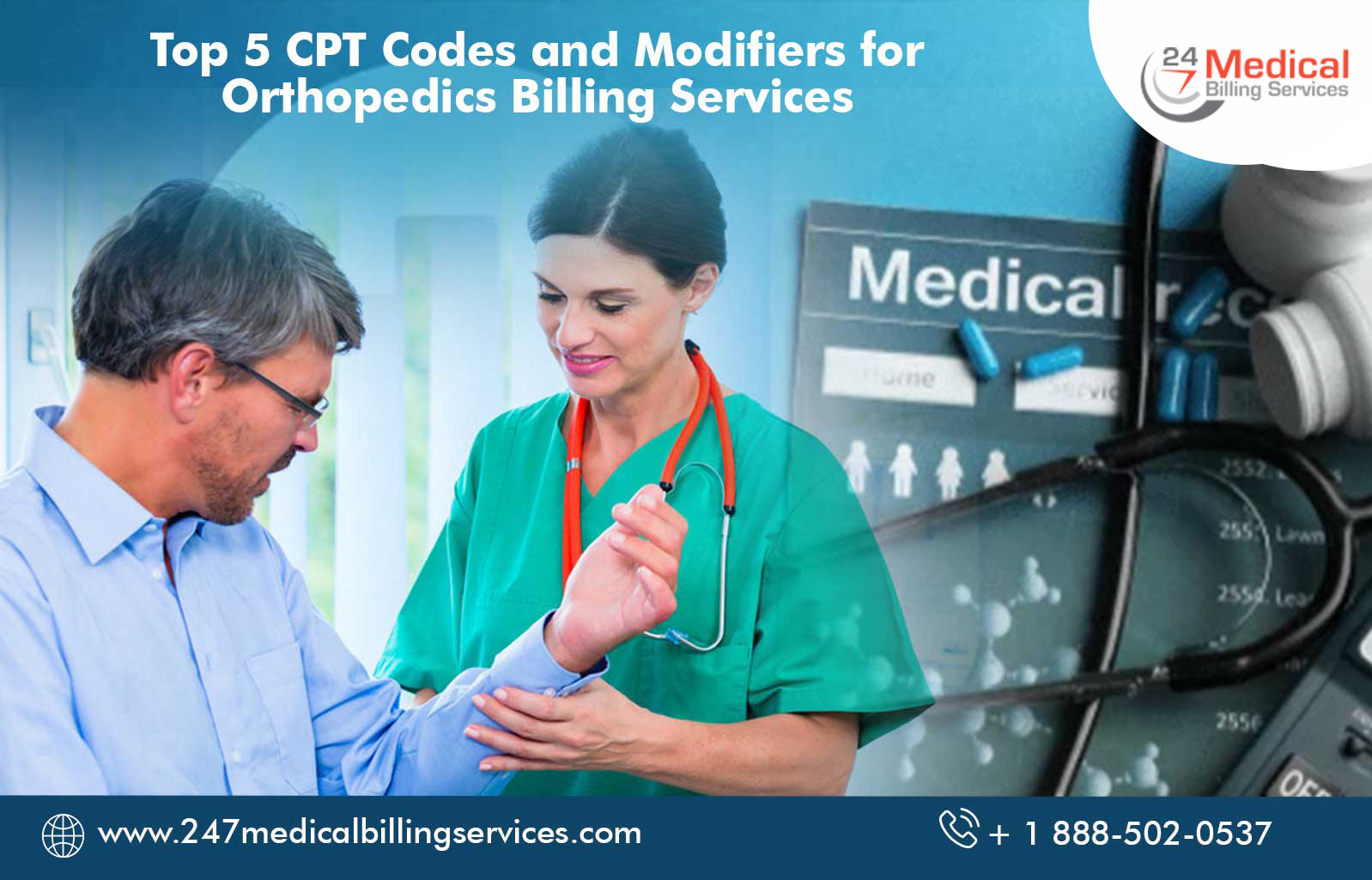
Top CPT Codes and Modifiers for Orthopaedics Billing Services
Orthopaedic treatments look after issues like injuries, congenital deformities or abnormalities, and diseases pertaining to the musculoskeletal system. No matter what the nature of Orthopaedic specialization your clinic specializes in, successful billing practices need that your medical billing specialist is expert and experienced in completing the coding demands relative to the specialty field.
Correctly interpreting the information and proper application of codes, modifiers, and extensions help creating and flawless functioning of proper revenue stream for the practice by reducing claim rejections and denials. Following every guideline put by CMS (Centers for Medicare and Medicaid Services), Orthopaedic specialist coders at 24/7 Medical Billing Services offer medical billing services to pump up your revenue cycle.
Implementing ICD-10 has brought around 264 new codes, 143 deleted, and 134 revised codes that are applicable to coding for an Orthopaedic practice. New rules with modifier 59 and the introduction of the applicable modifiers XU, XE, XP, and XS are revolutionizing Orthopaedics billing from here. Our team of Orthopaedic billing professionals displays their knowledge of the ICD-10 and proficiency in multiple ways in which the new requirements and coding changes impact Orthopaedics.
What are modifiers in Orthopaedics billing and why are they game changers?
Modifiers are simply two-character designators that point towards a change in how the code for the procedure or services should be applied for the claim. When put to use strategically, modifiers can bring accuracy and detail to the record of the medical transaction. When misused, they can lead to claim denials, refunds & fines (in rare cases), and investigators.
Modifiers are two digit codes with two levels:
- Level I Modifiers: Usually known as CPT Modifiers and have two numeric digits and are updated annually by AMA – American Medical Association. CPT modifiers are used as an additional supplement to the information or adjust care descriptions to give extra details about a procedure or specific provided service to a patient.
- Level II Modifiers: Level II modifiers are HCPCS Modifiers consisting of two digits (Alpha / Alphanumeric characters) in the range AA to VP. These modifiers are annually updated by CMS – Centers for Medicare and Medicaid Services.
To get the right revenue through your Orthopaedic practice needs in-depth knowledge and the use of code modifiers wherever suitable and permissible. Modifiers are used in the main procedure code to show that the procedure has been changed by a distinct factor. Modifiers can impact reimbursement. They are also the reason for claims not to play properly or deny if used incorrectly or not used, whenever necessary. Some modifiers are meant for Ambulatory Surgical Cenblueters only, some for physician practices, and some are for use by both provider types.
Top CPT codes used in Orthopaedics billing:
• Evaluation and Management: 99201 – 99499
• Anesthesia: 00100 – 01999; 99100 – 99140
• Surgery: 10021 – 69990
• Radiology: 70010 – 79999
• Pathology and Laboratory: 80047 – 89398
• Medicine: 90281 – 99199; 99500 – 99607
Hand Surgery
• CPT - 11760 – Repair of Nail Bed
• CPT – 25215 – Carpectomy; all bones of proximal row
• CPT – 64721 – Neuroplasty (carpal tunnel release)
Carpal Tunnel Release – 64721
• “Neuroplasty and/or transposition; median nerve at carpal tunnel”
• Endoscopic Carpal Tunnel Release – 29848
Here is a precise table showing when to use modifiers in Orthopaedic procedures:
Modifier Procedure Unit (ASC/P) -50 Bilateral procedures Both -51 Multiple procedures (P) -52 Reduced services - -58 Staged or related procedure or service by the same physician during the postoperative period Both -59 Distinct procedural service Both -73 Discontinued outpatient hospital/ASC procedure prior to the administration of anesthesia (A) -74 Discontinued outpatient hospital/ASC procedure after the administration of anesthesia (A) -76 Repeat procedure or service by the same physician Both -77 Repeat procedure or service by another physician Both -78 Return to the OR for a related procedure during the postoperative period Both -79 Unrelated procedure or service by the same physician during the postoperative period Both -RT & -LT Right Side and Left Side Both -TC Technical component Both
If you are an Orthopaedic practice looking for expert medical biller and coder, you are at the right place.
We are 24/7 Medical Billing Services, a dedicated medical billing and coding agency for specialized Orthopaedics practices. Just drop us an email at info@247medicalbillingservices.com and send us your query. Our professionals will guide you on how you can enhance your revenue model along with reducing denials.
Read more: A Guide To Survive Orthopedic Billing Issues

.png)